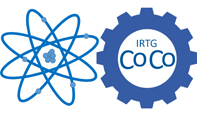13.06.2017 - Björn Kubala - Josephson Photonics: Josephson Devices as Quantum Microwave Sources
| When |
Jun 13, 2017
from 01:00 PM to 02:00 PM |
|---|---|
| Where | HS II, Physik Hochhaus, Hermann-Herder-Str. 3 |
| Add event to calendar |
|
Sources of non-classical photons have important applications in quantum communication and sensing technologies. With non-classical microwave sources these are extended to circuit-QED setups extensively used for various quantum information tasks. Over the last years, a number of different experiments have realized the continuous emission of microwave-photons into a cavity mode by the Cooper-pair current across a dc-biased Josephson junction. These new Josephson-photonics devices can be designed (or even tuned in-situ) to act as a coherent source, a single-photon source, a source of pairs of photons, or to create other non-classical states of light.
Generally speaking, electronic transport through any nanoscale devices is no longer governed by the classical laws of macroscopic physics. Instead a proper theoretical description has to account for the fact, that current is constituted from quantized units of charge (be it electrons or Cooper pairs). Furthermore, emission of radiation generated by the flow of charges depends not just on the properties of the conductor itself, but also on those of its electromagnetic environment.
A microwave resonator connected in series to a Josephson junction can thus be exploited as a particularly well-defined electromagnetic environment, which absorbs the energy provided by the bias to each tunneling Cooper pair by creating photons. This allows to reach a domain of strong charge-light interaction in combination with a basically perfect conversion of electrical into photonic energy.
In this talk, we will discuss how theory describes the strong mutual feedback between cavity and junction which can lead to novel far-from-equilibrium regimes where the charge current and the photon flux leaking out of the cavity are both determined by the non-linear behavior of the combined system. We will explain, why in a Josephson-photonics experiment with a single mode of large impedance strongly anti-bunched photons are produced, opening the path to a single-photon source in the microwave range. The non-classical nature of the light source has also been demonstrated by measuring the strongly reduced noise of correlated light, which is produced by a Cooper-pair crossing a junction, which is coupled to two resonators, and thereby emitting a pair of photons.
See poster.


